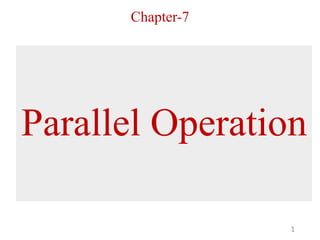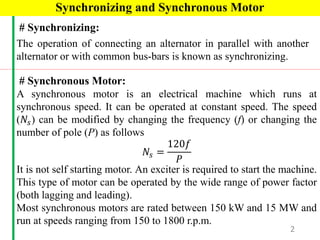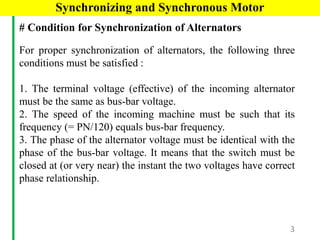The document discusses synchronous motors and synchronization of alternators. It provides information on the following key points:
1. Synchronous motors run at a constant synchronous speed, which can be modified by changing supply frequency or number of poles. They require an exciter to start and can operate at varying power factors.
2. For proper synchronization of alternators, their terminal voltages and frequencies must match the bus-bar voltage and frequency, and their phases must be identical.
3. Synchronous motors are started by first applying reduced voltage to start rotation, then applying weak excitation to pull it into synchronism before applying full voltage. Proper excitation allows operation at varying power factors.









